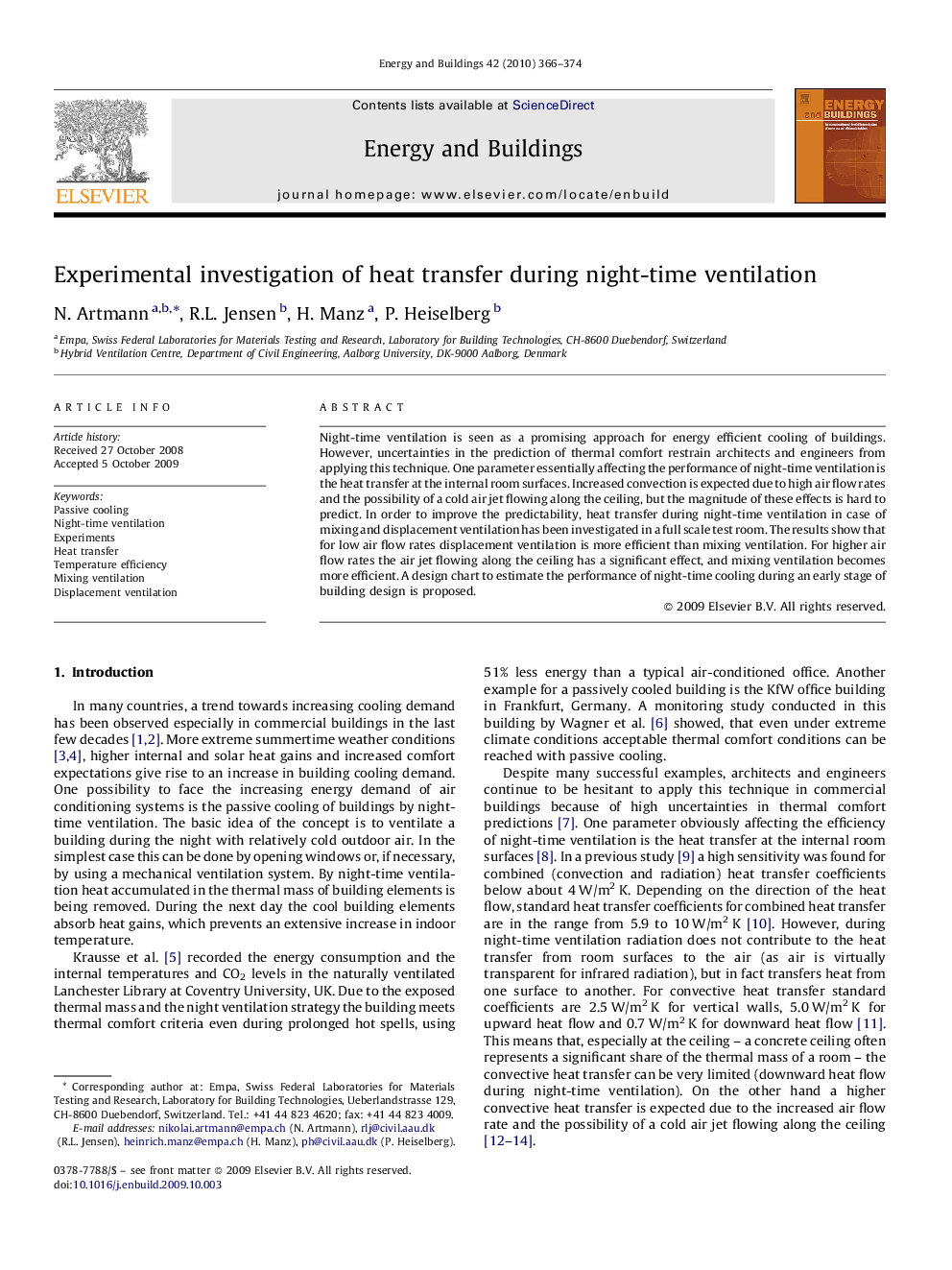| Article ID | Journal | Published Year | Pages | File Type |
|---|---|---|---|---|
| 265114 | Energy and Buildings | 2010 | 9 Pages |
Night-time ventilation is seen as a promising approach for energy efficient cooling of buildings. However, uncertainties in the prediction of thermal comfort restrain architects and engineers from applying this technique. One parameter essentially affecting the performance of night-time ventilation is the heat transfer at the internal room surfaces. Increased convection is expected due to high air flow rates and the possibility of a cold air jet flowing along the ceiling, but the magnitude of these effects is hard to predict. In order to improve the predictability, heat transfer during night-time ventilation in case of mixing and displacement ventilation has been investigated in a full scale test room. The results show that for low air flow rates displacement ventilation is more efficient than mixing ventilation. For higher air flow rates the air jet flowing along the ceiling has a significant effect, and mixing ventilation becomes more efficient. A design chart to estimate the performance of night-time cooling during an early stage of building design is proposed.
